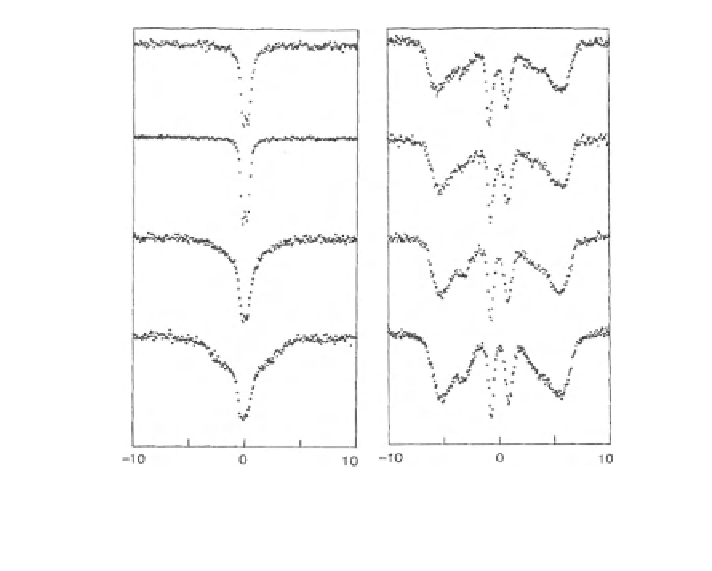Chemistry Reference
In-Depth Information
300 K
4.2 K
(a)
(a)
(b)
(b)
(c)
(c)
(d)
(d)
Velocity (mm/s)
Velocity (mm/s)
Fig. 5.5 RE layer thickness dependence of the Mössbauer spectra for Fe/Nd multilayers with the
Fe layer thickness of 1.3 nm; (a) Nd (4.6 nm), (b) Nd (2.8 nm), (c) Nd (1.4 nm), and (d)Nd
(0.7 nm) [
9
]
57
Fe Studies on Interfaces of Magnetic Films
5.4
5.4.1 Interfaces of Fe/Mn and Fe/Cr
From a viewpoint of fundamental physics, it is very important to investigate the
properties of metal surfaces in ultrahigh vacuum atmosphere but such clean vac-
uum surfaces are just toys which exist only in research laboratories. Real materials
are containing various kinds of interfaces, but studies on interfaces are not yet well
developed, since experimental means to investigate interfaces from atomic scale
are very limited. In this section it is described that the Mössbauer spectroscopy is
useful to observe the situations of interface, and particularly if the material is
magnetic, hyperfine field observation may give us fruitful information for
microscopic interface studies. In case of multilayers consisting of Fe and other
metal X, or a sandwich structure, X/Fe/X, there are interfaces of Fe layer in contact
with X. Before arguing the magnetic properties of Fe/X interfaces, it is important
to clarify the chemical profile of interface. Normally, the degree of chemical
mixing at the interface depends on the reactivity of X metal and also the process of
layer depositions; Fe-on-X, or X-on-Fe. The Mössbauer spectroscopy is a unique
method to study the difference of the two kinds of interface in one Fe layer.

